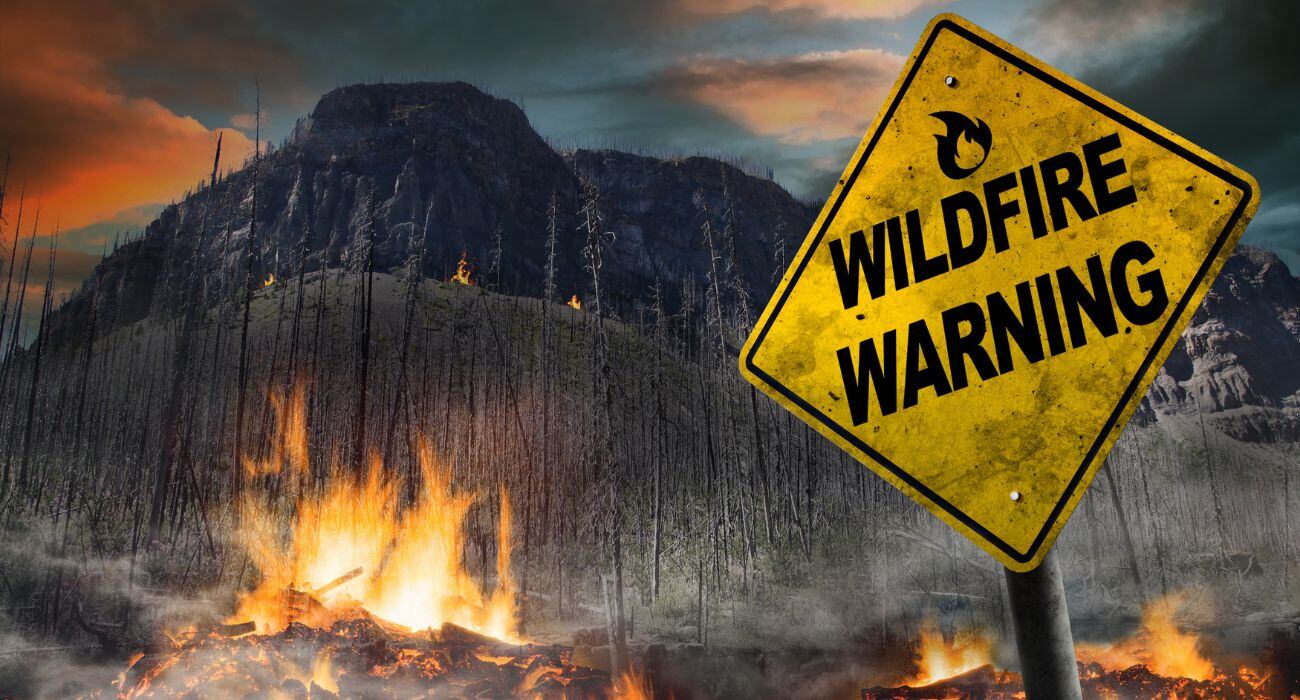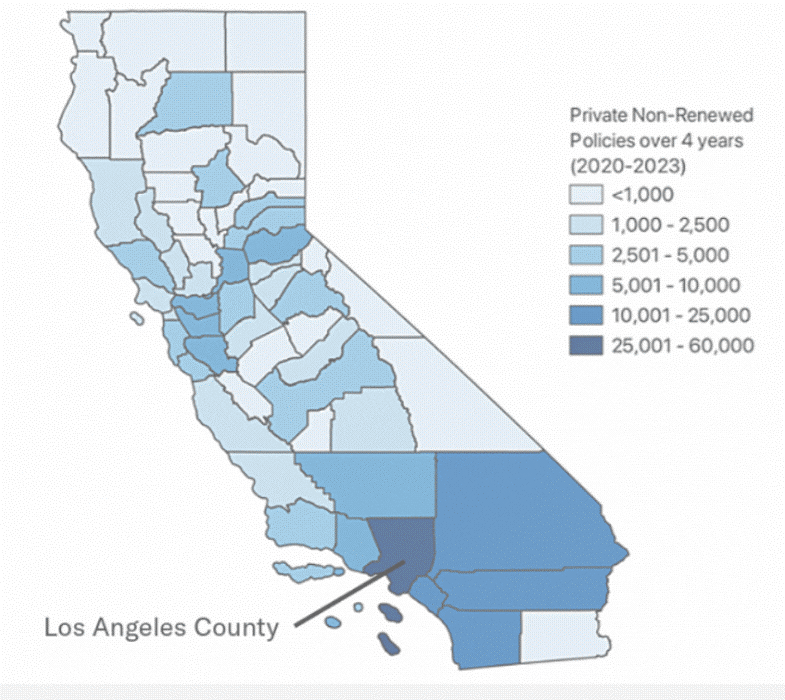
The recent Los Angeles wildfires exemplify a growing crisis in natural disasters that poses significant challenges for insurance and real estate markets. The increasing frequency and severity of these events are fundamentally reshaping how we think about risk management and property.
Let’s now examine these trends and explore their implications for stakeholders across both financial and non-financial sectors.
Shifting Focus in Climate Risk
Climate risk assessment has evolved dramatically in recent years, moving the focus from long-term transition risks to the immediate impacts of natural disasters. While California's wildfires often dominate headlines, the risk extends far beyond state boundaries.
Cristian deRitis
Western U.S. states, for example, have experienced unprecedented fire activity, while northeastern regions have seen wildfire totals soar past historical records. The crisis, moreover, has become global, with Canada, Europe, Australia and Russia all experiencing severe wildfires recently that threaten communities and property as temperatures rise and drought conditions worsen.
Insurance Market Evolution
The insurance industry has undergone significant transformation in response to these challenges. In California, for example, some private insurers have pull backed from offering coverage in high-risk areas – partly due to the increase of frequency and severity of wildfires, but also because of a regulatory environment that has not supported the incorporation of the costs of wildfire loss into rate-making (via catastrophe models).
Figure 1: Insurance Policy Non-Renewals, California (2020-2023)

Sources: Staff report (December 20224) from www.budget.senate.gov, as well as a Moody’s article on addressing the insurance gap and the hidden risks for California homeowners in wildfire-prone areas.
Figure 1 (above) depicts the trend toward non-renewal of insurance policies across California. Another trend that reflects a broader reassessment of how wildfire risk is being evaluated and priced is the rising cost of reinsurance, which has been driven by the increased frequency and severity of catastrophic events.
As traditional insurers step back, smaller regional insurers and the California state FAIR plan for fire insurance coverage have become increasingly important. However, even with these alternatives, the struggle to fill the growing coverage gap may continue without significant reforms.
The Cost of Reactive Risk Management
The current crisis reveals the limitations of reactive risk management approaches. Despite years of awareness about rising wildfire risks, policymakers have often delayed necessary reforms when faced with a constituent backlash against higher costs due to revised building codes and risk-based insurance premiums. This pattern creates a costly cycle where governments spend substantial sums helping property owners after disasters, rather than addressing the fundamental issues of underpriced insurance premiums and resilient building practices before disaster strikes.
Firas Saleh
This reactive approach carries hidden costs that extend far beyond immediate disaster response expenses. When insurance markets don't properly price risk, they fail to send appropriate signals about the true cost of building and living in high-risk areas. This market distortion leads to continued development in vulnerable regions, ultimately increasing the potential for catastrophic losses.
Moreover, incentives for property owners to invest in risk mitigation measures are reduced by the lack of proper price signals, creating a feedback loop that amplifies overall system vulnerability.
Real Estate Market Impacts
These insurance market disruptions have triggered profound changes in real estate markets. Property values in high-risk regions have become increasingly volatile, as buyers struggle to assess the true cost of ownership in areas where insurance may be expensive or unavailable.
Some homeowners, particularly those on fixed incomes, are choosing to relocate as rising insurance and maintenance costs make their properties financially untenable. Florida serves as a cautionary tale, where similar challenges with hurricane risk have forced many longtime residents to depart.
The ripple effects extend throughout the housing sector. New construction has slowed significantly in vulnerable areas, with developers finding it increasingly difficult to secure construction loans and insurance coverage.
Mortgage lenders have responded by incorporating insurance considerations more prominently into their underwriting criteria, often implementing stricter requirements or geographic restrictions in high-risk areas. These changes have begun to affect transaction volumes and property values, potentially creating a downward spiral in particularly vulnerable regions.
Risk Assessment Evolution
Traditional approaches to risk assessment have proven inadequate for today's challenges. Modern risk management requires a more sophisticated framework that incorporates multiple factors beyond basic hazard metrics.
Climate considerations, for example, must account for extended fire seasons, more frequent extreme weather events, higher average temperatures, changing precipitation patterns and expanding wildland-urban interface zones. Physical and regulatory factors include the expansion of construction into fire-prone areas, evolving development patterns and the effectiveness of building codes updates and community-level mitigation efforts.
Urban conflagration risk has emerged as a particular concern, especially in densely-populated areas where structure-to-structure fire spread can quickly escalate a wildfire into an urban disaster. Consequently, advanced catastrophe models now employ comprehensive stochastic catalogs to simulate millions of wildfire scenarios and account for antecedent conditions, helping stakeholders understand potential fire spread patterns and assess potential losses.
By analyzing factors such as wind, vegetation and topography, these sophisticated models can identify high-risk areas and guide the implementation of mitigation strategies. They have become essential for utility companies and other stakeholders in understanding and managing their exposure to wildfire risk.
Strategic Considerations for Risk Managers
The implications for risk managers extend well beyond direct property damage. Indeed, as property values decline in high-risk areas and mortgage default risks rise, financial institutions face increasing challenges.
The uncertainty surrounding future collateral values has led to reduced lending appetite in vulnerable regions, potentially triggering economic decline as businesses and households relocate. Investment managers must also grapple with risks to municipal bonds, real estate investment trusts and infrastructure investments in affected areas.
Environmental impacts create additional challenges, as smoke and fire-suppression chemicals can impact air and water quality far beyond the immediate fire zone. These indirect effects can disrupt business operations and create health hazards for workers and customers in otherwise unaffected areas. Local economies may therefore experience significant price pressures as displaced residents seek temporary housing, creating both challenges and opportunities for businesses in surrounding communities.
Government operations and finances face particular strain in affected areas. Beyond immediate disruptions to services like permit processing, municipalities must contend with declining tax revenues – even amid increased demand for fire protection, police services and other public functions. This fiscal squeeze forces difficult choices between service reductions and tax increases, potentially accelerating economic decline in vulnerable regions.
The Path Forward
Moving forward requires a comprehensive approach to managing wildfire-related risks. Success depends on developing more sophisticated risk assessment capabilities and creating geographic diversification strategies that balance market presence with risk exposure. These efforts must be supported by technological innovations in fire-resistant construction and risk modeling – and should be supplemented by reformed regulatory frameworks that provide proper incentives for risk mitigation.
The path to improvement requires proactive engagement from all stakeholders. Changes to building codes and risk management practices should be implemented long before disasters strike, when constituent resistance may be lower and opportunities for meaningful reform are greater.
Organizations that successfully navigate these changes while maintaining financial sustainability will be better positioned for long-term success in this evolving risk landscape.
Understanding the interconnected nature of wildfire risk across insurance, housing and finance markets is crucial. While disruptions in any area can cascade through the system, a comprehensive approach that considers long-term implications can enhance overall market resilience.
The key lies in developing sustainable solutions through effective collaboration between stakeholders, advanced risk modeling and appropriate incentive structures (including risk-based insurance pricing) that encourage proactive risk management and mitigation efforts.
Cristian deRitis is Managing Director and Deputy Chief Economist at Moody’s Analytics. As the head of econometric model research and development, he specializes in analyzing current and future economic conditions, scenario design, consumer credit markets and housing. In addition to his published research, Cristian is a co-host of the popular Inside Economics Podcast. He can be reached at cristian.deritis@moodys.com.
Firas Saleh is Director of Model Product Management at Moody’s. He oversees the North America flood and wildfire modeling solutions. His role involves a close collaboration with stakeholders and various cross-functional teams within Moody’s, focusing on defining and executing the strategic vision and roadmap for the flood and wildfire perils. He can be reached at firas.saleh@moodys.com.
Topics: Model Risk